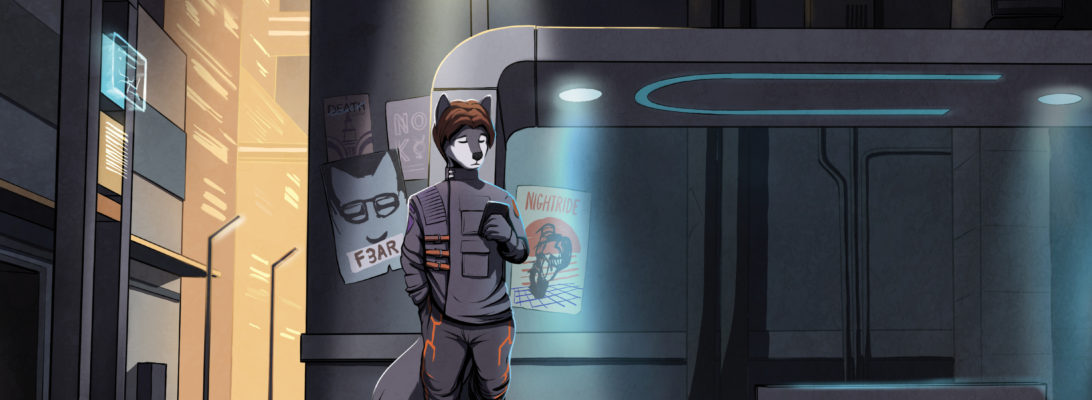The most important strength of the furry fandom is that it’s one of the few fandoms left today which is not owned by someone. I would argue that it is the most closely-knit group that is not based around someone else’s intellectual property. And by ‘intellectual property’ I don’t mean just movies, music, or video games, but to any group or club built around someone else’s stuff. Sports teams are all owned and tightly controlled by wealthy people and their companies. Even recreational sports are difficult to get into without spending a significant amount of money. Look at the membership fees of any country club. Car culture and motorcycle culture is similarly built around expensive products and brands that are owned by huge corporations. Likewise with gaming culture—so transient that if you’re not spending several hundred dollars a year on the latest releases, you’re out of the loop. 1
The furry fandom however, is built around an idea: the concept of anthropomorphization. Nobody owns it, and nobody can own it. It is fundamental and inalienable.
This fact is one of the greatest things we have as furries. We can point to the enormous amount of creative output and say we’re doing it for ourselves, not for the benefit or the advertisement of someone else’s IP.
I think it’s important to keep this in mind any time we start to talk about legitimacy in public contexts. There’s always a lot of worry the corporations will make in-roads into the furry fandom—for it to become so mainstream that it loses the spark which makes it special. But that is what makes it special. No company can own it. The best they can do is pander to it. Of course there will always be some people who will buy cheap furry-adjacent stuff from Walmart or whatever because that’s just how people are. But they’ll never be able to dilute what the fandom is fundamentally about: each person making their own characters, their own worlds, and their own IP.
With that said, I don’t think there’s anything wrong with wanting furry to become more recognized and accepted. It’s always been the joke that furries are the lowest of the already low geek hierarchy, but the longer I’ve been in the fandom the less true that is. Even just in the 12+ years that I’ve been involved, there’s been a major shift in furry culture. I can only imagine how much greater that shift is for people who’ve been participating for 20 or 30 years.
As a personal example, when I was in art school in the early 2000’s, there was nothing furry related whatsoever happening in art school. When I went to grad school ten years later, people were at least referencing furries. It was clear many artists knew what they were, even if they weren’t furries themselves. Five years after that, I was seeing art students who were openly furry, and incorporating furry themes into their work, and describing it as such. In 15 years it went from being completely unheard of to just another thing in the spectrum of things art students are.
This is an important development not just in the sense that furry is becoming more mainstream (whether we like it or not), but that it’s becoming mainstream in a particular way. It’s no longer solely a geeky pursuit, but it’s becoming more of an artistic pursuit as well. Long gone are the days where the majority of furries were sci fi geeks or computer nerds. Now we’re everything, from lawyers to mechanics to (in fairness still quite a lot of) computer nerds. But even so, saying that the furry fandom lies at the bottom of the geek hierarchy doesn’t really make as much sense today as it did in the 90’s.
Besides, if we are striving for a sense of legitimacy in the larger cultural sphere, well, we’re getting it. It’s all too common for us to look at where we are now and say, “but we’re not there yet”, pointing over to some other theoretically better position where we’d like to be. 2 But in so doing, it’s too easy to forget where we’ve come from, too. The furry fandom is at least recognized as a thing now, and the press that it has gotten is increasingly more positive—and importantly, more accurate. Take a look at what most articles get right now: they will explain how not everyone has a fursuit, that furry is a more diverse group than you’d expect, and most never even bother mentioning the sexual side anymore. Articles about the furry fandom have gone from shock to curiosity, which is legit a big step up.3
And throughout all of this, not only have we maintained our core value of collective independent creativity, but if anything, it’s gotten even stronger. We still dip our toes into corporate owned IP, but almost every one of us has our own characters, our own art, even our own brands. More and more furries are making their hobby their livelihood.
Furry will continue to become mainstream, and it’s going to have growing pains as it does so. But that doesn’t mean it’s going to lose what makes it special. If you ever feel overwhelmed by criticism or drama, just remember: this is your fandom and you helped build your little piece of it. No megacorp billionaire CEO can take that away from you.
